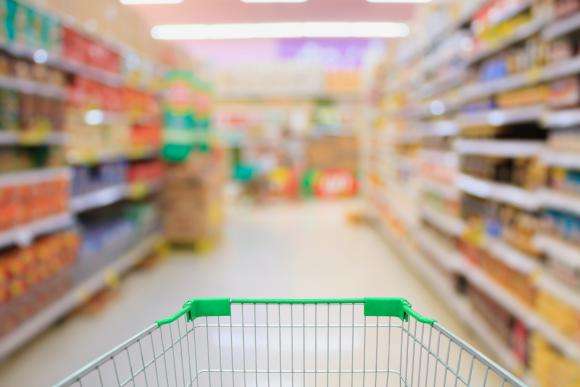SNAP benefits increase household spending on food, study finds

A new study by two Brown University economists at the Rhode Island Innovative Policy Lab finds that Supplemental Nutrition Assistance Program (SNAP) benefits increase a household's overall spending on food each month and that an equivalent cash benefit would lead to much smaller increases in food spending.
"For every $100 in SNAP benefits that a household receives, the household spends just over $50 more on food each month," said Jesse Shapiro, an economics professor at Brown who authored the study with his colleague, Justine Hastings.
That means that the household spends the $100 of SNAP benefits and about $50 from their own budget on food.
SNAP, the successor to the Food Stamp Program, delivers benefits via electronic benefit transfer (EBT) cards, which are similar to debit cards but can only can be used to buy groceries at eligible retailers.
In the study, "How Are SNAP Benefits Spent? Evidence from a Retail Panel," Hastings and Shapiro analyzed anonymized data from a grocery retail chain consisting of detailed records on more than 500 million transactions by nearly half a million households over more than six years. The data include information on method of payment, including EBT cards.
Households in the study that received an average of $200 per month in SNAP benefits increased their spending on SNAP-eligible food products by approximately $110. This means that SNAP benefits raise overall food spending by between 50 and 60 percent of the benefit's value, the authors wrote.
The finding counters what many traditional economic models predict. In such models, a household with, for instance, $300 a month in grocery expenses and a $200 SNAP benefit could use SNAP to free up $200 of cash and spend the additional resources mostly on items other than groceries, the authors explained in the study. But that is not what happened in Hastings and Shapiro's large sample group.
Rather, the study finds that SNAP has a much larger effect on food spending than would an equivalent cash benefit. The authors argue that a range of evidence implies that a cash benefit of $200 per month would raise food spending by less than $20 or 10 percent of the subsidy value.
This finding is important, Shapiro said, "because the stated intention of the SNAP program is to help people buy food," and there is no settled answer on whether that is the main effect. In 1964, when President Lyndon B. Johnson signed the Food Stamp Act, he declared the program would "enable low-income families to increase their food expenditures."
In addition to finding that every $100 in SNAP benefits leads to between $50 and $60 extra dollars of food spending each month, the researchers found that receipt of SNAP benefits makes households less likely to buy store brands or redeem discount coupons on SNAP-eligible food products.
This second finding is something the researchers suggest may be due to "mental accounting," in which benefit recipients consider SNAP benefits as earmarked for food purchases.
"It may be that with an enlarged mental food budget, households cut back on bargain-hunting when they are buying food," Shapiro said.
While the study shows that SNAP has a large effect on food spending, beyond what would be expected from equivalent cash benefits, the finding that SNAP benefits change how households shop for bargains may indicate an important role for consumer psychology in understanding the effects of the program, the authors said.
More information: "How Are SNAP Benefits Spent? Evidence from a Retail Panel," DOI: 10.3386/w23112
Provided by Brown University


















